In the thriving segment of compact SUVs, the Ford Puma and Peugeot 2008 stand out as top contenders, each bringing its unique flair and technological advancements. This comparison delves into the technical aspects and innovations that shape these two vehicles, aimed at helping buyers make informed decisions.
Ford Puma vs Peugeot 2008 – Which one offers the better deal?
Everyday use, family trips or long-distance drives – here’s where the differences show.
Discover whether Ford Puma or Peugeot 2008 fits your lifestyle better.
Design and Dimensions
The Ford Puma measures 4186 mm in length and 1805 mm in width, offering a rugged yet stylish appearance typical of the Ford brand. With a height of 1550 mm, it provides ample headroom and a commanding driving position. In contrast, the Peugeot 2008 is slightly longer at 4304 mm, with a width of 1770 mm and a height of 1523 mm. The Peugeot carries a more contemporary design language, with a sleek silhouette and intricate LED lighting.
Powertrains and Performance
The Puma offers a selection of engines, including petrol MHEV options producing between 125 to 168 HP, with associated torque figures ranging from 170 to 290 Nm. This power provides a 0-100 km/h acceleration time as quick as 7.4 seconds, alongside fuel consumption figures of 5.4 to 6 L/100 km, depending on the variant chosen.
On the other hand, the Peugeot 2008's power range is slightly different, with petrol MHEV configurations achieving 136 HP and 206 Nm of torque. Its standout performance metric is a remarkably agile 0-100 km/h time of just 8.3 seconds with the strongest variant while maintaining an efficient consumption of around 5 L/100 km.
Electric Options and Sustainability
Both models demonstrate a commitment to electrification. The Ford Puma’s hybrid variant features a 43 kWh battery, enabling an electric range of up to 376 km. It logically combines the performance of a petrol engine with electric assistance, appealing to eco-conscious buyers.
Meanwhile, the Peugeot 2008 presents an even larger battery capacity ranging from 46 to 51 kWh, allowing it an electric range stretching up to 406 km. This edge reflects Peugeot’s innovative electric strategy, aiming to cater to the rising demand for greener mobility solutions.
Interior and Technology
Inside, the Ford Puma boasts a spacious cabin with a boot capacity of up to 523 L, making it practical for family needs. The infotainment system is embedded with Ford's latest SYNC technology, offering seamless smartphone integration and advanced vehicle features.
In contrast, the Peugeot 2008 excels in interior design, bringing a modern aesthetic with a 3D i-Cockpit layout. Although the trunk capacity of 434 L is slightly lesser than the Puma’s, the Peugeot prioritizes driver engagement with an intuitive touchscreen interface and a panoramic sunroof for enhanced ambiance.
Safety and Driving Assurance
In terms of safety, both vehicles are equipped with an array of features designed to ensure peace of mind on the road. Ford’s Co-Pilot360 includes advanced driver-assistance systems like adaptive cruise control and lane-keeping aid, aiming to provide a more confident driving experience.
The Peugeot 2008, on the other hand, includes Safety Pack options that encompass features such as automatic emergency braking and a full suite of airbags, illustrating its dedication to occupant protection and collision avoidance.
Conclusion: The Choice Ahead
Ultimately, choosing between the Ford Puma and Peugeot 2008 hinges on individual preference. The Puma offers a sportier performance and greater cargo space, while the 2008 impresses with its modern design and superior electric range. Buyers will find compelling options in either vehicle, backed by innovative technology and distinctive character that define the modern SUV experience.
Here’s where it gets real: The technical differences in detail
Costs and Efficiency:
Price and efficiency are often the first things buyers look at. Here it becomes clear which model has the long-term edge – whether at the pump, the plug, or in purchase price.
Peugeot 2008 has a hardly perceptible advantage in terms of price – it starts at 24500 £, while the Ford Puma costs 24800 £. That’s a price difference of around 309 £.
Fuel consumption also shows a difference: Peugeot 2008 manages with 4.90 L and is therefore somewhat more efficient than the Ford Puma with 5.40 L. The difference is about 0.50 L per 100 km.
In terms of energy consumption, the advantage goes to the Ford Puma: with 13.10 kWh per 100 km, it’s a bit more efficient than the Peugeot 2008 with 15.50 kWh. That’s a difference of about 2.40 kWh.
As for range, the Peugeot 2008 performs hardly perceptible better – achieving up to 406 km, about 30 km more than the Ford Puma.
Engine and Performance:
Power, torque and acceleration say a lot about how a car feels on the road. This is where you see which model delivers more driving dynamics.
When it comes to engine power, the Ford Puma has a slight edge – offering 168 HP compared to 156 HP. That’s roughly 12 HP more horsepower.
In acceleration from 0 to 100 km/h, the Ford Puma is somewhat quicker – completing the sprint in 7.40 s, while the Peugeot 2008 takes 8.30 s. That’s about 0.90 s faster.
In terms of top speed, the Ford Puma performs slight better – reaching 210 km/h, while the Peugeot 2008 tops out at 206 km/h. The difference is around 4 km/h.
There’s also a difference in torque: Ford Puma pulls slight stronger with 290 Nm compared to 270 Nm. That’s about 20 Nm difference.
Space and Everyday Use:
Beyond pure performance, interior space and usability matter most in daily life. This is where you see which car is more practical and versatile.
Both vehicles offer seating for 5 people.
In curb weight, Peugeot 2008 is hardly perceptible lighter – 1263 kg compared to 1316 kg. The difference is around 53 kg.
In terms of boot space, the Ford Puma offers to a small extent more room – 523 L compared to 434 L. That’s a difference of about 89 L.
In maximum load capacity, the Peugeot 2008 performs slightly better – up to 1467 L, which is about 184 L more than the Ford Puma.
When it comes to payload, Ford Puma minimal takes the win – 469 kg compared to 447 kg. That’s a difference of about 22 kg.
Who wins the race?
The Ford Puma proves to be edges out slightly and therefore becomes our DriveDuel Champion!
Ford Puma is the better all-rounder in this comparison.
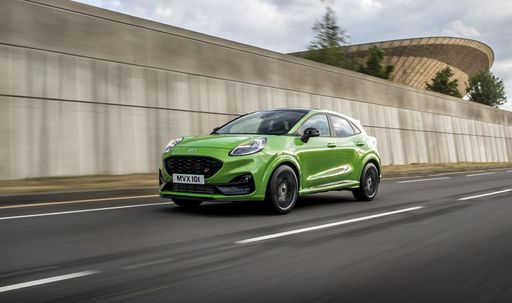 @ Ford Motor Company / Ford Media Center
@ Ford Motor Company / Ford Media Center
Ford Puma
Ford Puma
The Ford Puma is a cheeky compact crossover that blends sporty styling with city-friendly practicality, giving drivers a surprisingly fun and composed ride. With clever storage tricks and a lively personality, it’s a smart pick for buyers who want enjoyment without fuss.
details @ Ford Motor Company / Ford Media Center
@ Ford Motor Company / Ford Media Center
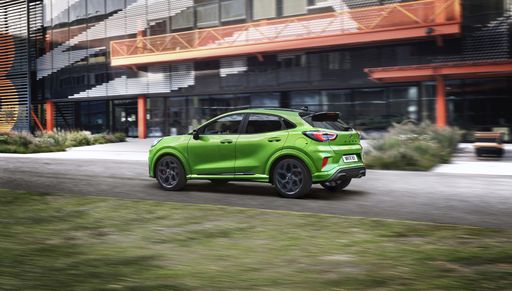 @ Ford Motor Company / Ford Media Center
@ Ford Motor Company / Ford Media Center
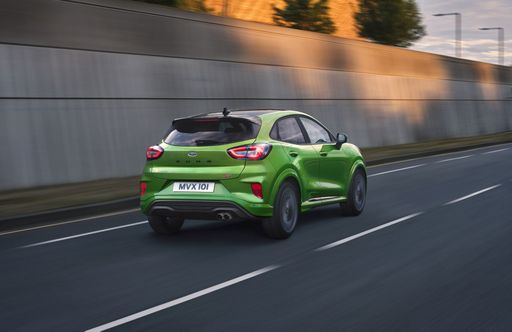 @ Ford Motor Company / Ford Media Center
@ Ford Motor Company / Ford Media Center
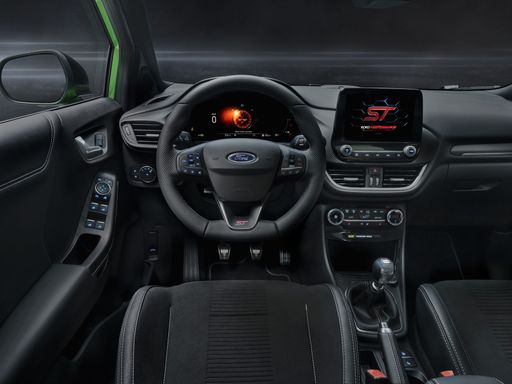 @ Ford Motor Company / Ford Media Center
@ Ford Motor Company / Ford Media Center
Peugeot 2008
The Peugeot 2008 is a stylish, city-friendly crossover that packs big character into a compact package, turning mundane errands into a mildly entertaining drive. Its clever interior layout, polished looks and confident ride make it a smart choice for buyers who want practical daily sense with a touch of flair.
details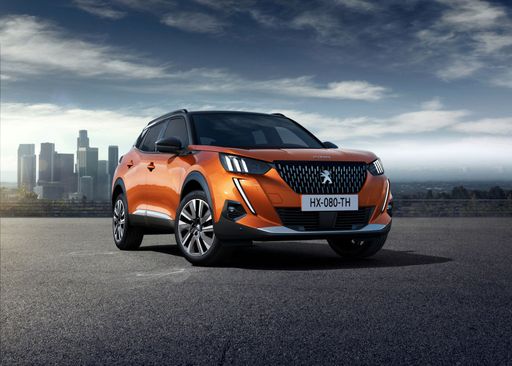 @ Peugeot / Stellantis Media
@ Peugeot / Stellantis Media
 @ Peugeot / Stellantis Media
@ Peugeot / Stellantis Media
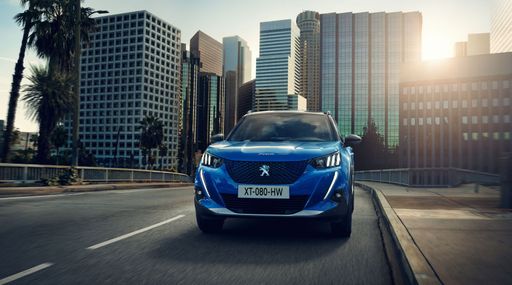 @ Peugeot / Stellantis Media
@ Peugeot / Stellantis Media
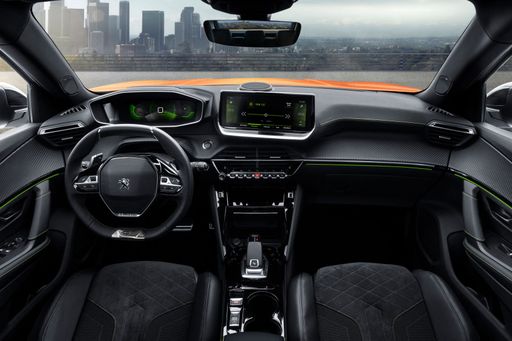 @ Peugeot / Stellantis Media
@ Peugeot / Stellantis Media
 @ Ford Motor Company / Ford Media Center
@ Ford Motor Company / Ford Media Center
|
 @ Peugeot / Stellantis Media
@ Peugeot / Stellantis Media
|
|
|
|
Costs and Consumption |
|
|---|---|
|
Price
24800 - 36300 £
|
Price
24500 - 40300 £
|
|
Consumption L/100km
5.4 - 5.9 L
|
Consumption L/100km
4.9 - 5.7 L
|
|
Consumption kWh/100km
13.1 - 13.9 kWh
|
Consumption kWh/100km
15.50 kWh
|
|
Electric Range
361 - 376 km
|
Electric Range
406 km
|
|
Battery Capacity
43 kWh
|
Battery Capacity
51 kWh
|
|
co2
0 - 135 g/km
|
co2
0 - 129 g/km
|
|
Fuel tank capacity
42 L
|
Fuel tank capacity
44 L
|
Dimensions and Body |
|
|---|---|
|
Body Type
SUV
|
Body Type
SUV
|
|
Seats
5
|
Seats
5
|
|
Doors
5
|
Doors
5
|
|
Curb weight
1316 - 1563 kg
|
Curb weight
1263 - 1623 kg
|
|
Trunk capacity
456 - 523 L
|
Trunk capacity
434 L
|
|
Length
4186 - 4226 mm
|
Length
4304 mm
|
|
Width
1805 mm
|
Width
1770 mm
|
|
Height
1550 - 1555 mm
|
Height
1523 mm
|
|
Max trunk capacity
1216 - 1283 L
|
Max trunk capacity
1467 L
|
|
Payload
367 - 469 kg
|
Payload
407 - 447 kg
|
Engine and Performance |
|
|---|---|
|
Engine Type
Electric, Petrol MHEV
|
Engine Type
Petrol, Electric, Petrol MHEV
|
|
Transmission
Automatic, Manuel
|
Transmission
Manuel, Automatic
|
|
Transmission Detail
Reduction Gearbox, Manual Gearbox, Dual-Clutch Automatic
|
Transmission Detail
Manual Gearbox, Reduction Gearbox, Dual-Clutch Automatic
|
|
Drive Type
Front-Wheel Drive
|
Drive Type
Front-Wheel Drive
|
|
Power HP
125 - 168 HP
|
Power HP
101 - 156 HP
|
|
Acceleration 0-100km/h
7.4 - 9.8 s
|
Acceleration 0-100km/h
8.3 - 10.9 s
|
|
Max Speed
160 - 210 km/h
|
Max Speed
150 - 206 km/h
|
|
Torque
170 - 290 Nm
|
Torque
205 - 270 Nm
|
|
Number of Cylinders
3
|
Number of Cylinders
3
|
|
Power kW
92 - 124 kW
|
Power kW
74 - 115 kW
|
|
Engine capacity
999 cm3
|
Engine capacity
1199 cm3
|
General |
|
|---|---|
|
Model Year
2025
|
Model Year
2023 - 2025
|
|
CO2 Efficiency Class
A, D
|
CO2 Efficiency Class
D, A, C
|
|
Brand
Ford
|
Brand
Peugeot
|
Is the Ford Puma offered with different drivetrains?
The Ford Puma is offered with Front-Wheel Drive.
The prices and data displayed are estimates based on German list prices and may vary by country. This information is not legally binding.
